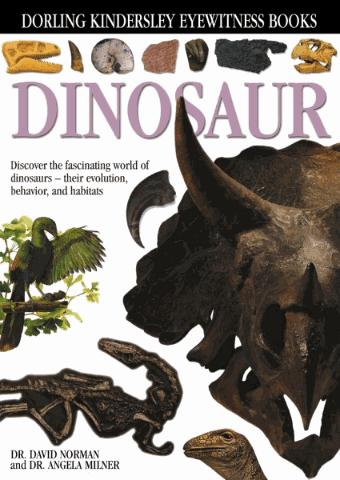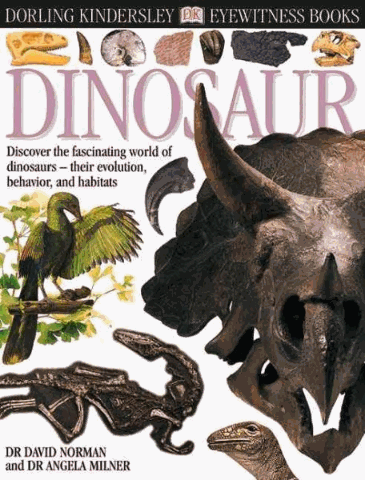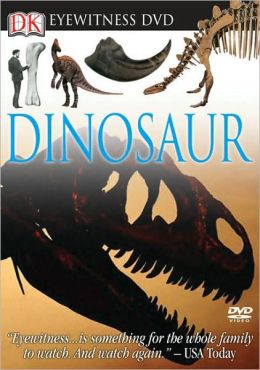
An illustrated, scientific introduction to dinosaurs that provides information on physical characteristics, diets, and behavior; describes how paleontologists find fossils; and includes a classification chart and a time line.
year: 1991, 2008, 1989, 2003, 2004, 2000, 2001, 1994, 2010
call number/section: 567.9, 567, 1000, 567.91, 568
subjects: dinosaurs, paleontology, history, fossils, juvenile literature
Editions
Norman, David
Prentice Hall (1991)
Based on the television series "Dinosaur!" Examines the natural history, biology, and controversy that surrounds the Mesozoic period of the dinosaur.
Schools: 2

Norman, David
DK Pub. (2008)
Presents general information on dinosaurs, including when and where they lived, characteristics, and behaviors. Includes clip art CD-ROM.
Schools: 4

Norman, David
Distributed by Random House (1989)
Text and photographs explore the world of the dinosaurs, focusing on such aspects as their teeth, feet, eggs, and fossils.
Schools: 44

Norman, David
Dorling Kindersley (2003)
Text and photographs explore the world of the dinosaurs, focusing on such aspects as their teeth, feet, eggs, and fossils.
Schools: 4

Norman, David
DK (2004)
Presents a photographic introduction to dinosaurs, explaining what they are, tracing the history of dinosaur discovery, and discussing the physical characteristics and behaviors of dinosaurs.
Schools: 4

Norman, David
Dorling Kindersley (2000)
Text and photographs explore the world of the dinosaurs, focusing on such aspects as their teeth, feet, eggs, and fossils.
Schools: 2
DK.
Schools: 0
s.n.
Schools: 0
Walker, Sarah
DK Publishing, Inc. (2001)
Schools: 0
Time Life Video (1994)
Journey into a three-dimensional "virtual museum" where live-action photography creates the sensation of being inside the picture.
Schools: 0

Sheen, Martin
Text and photographs explore the world of the dinosaurs, focusing on such aspects as their teeth, feet, eggs, and fossils.
Schools: 1
DK.
Schools: 1
Lambert, David
DK (2010)
An illustrated, scientific introduction to dinosaurs that provides information on physical characteristics, diets, and behavior; describes how paleontologists find fossils; and includes a classification chart and a time line.
Schools: 1